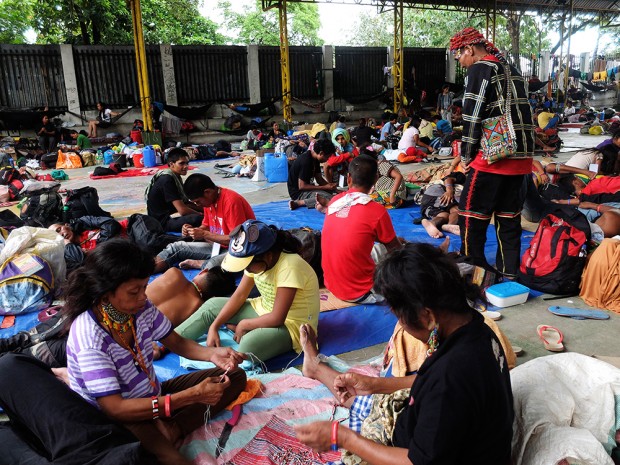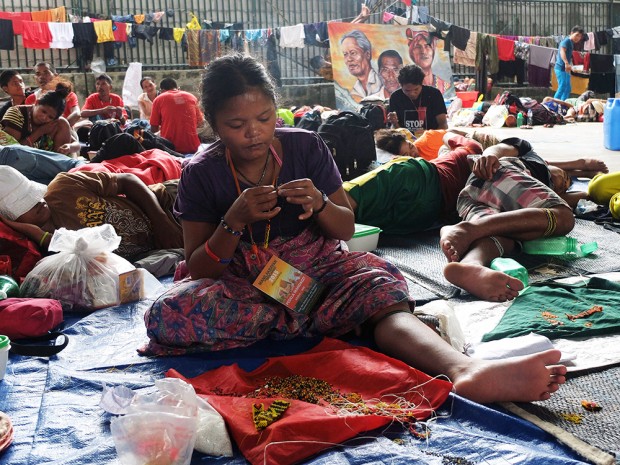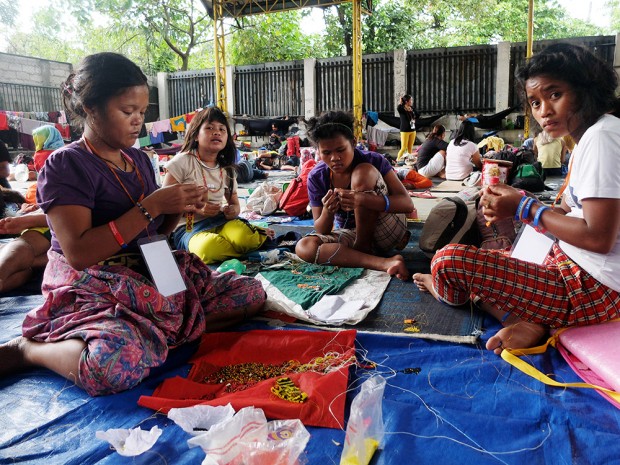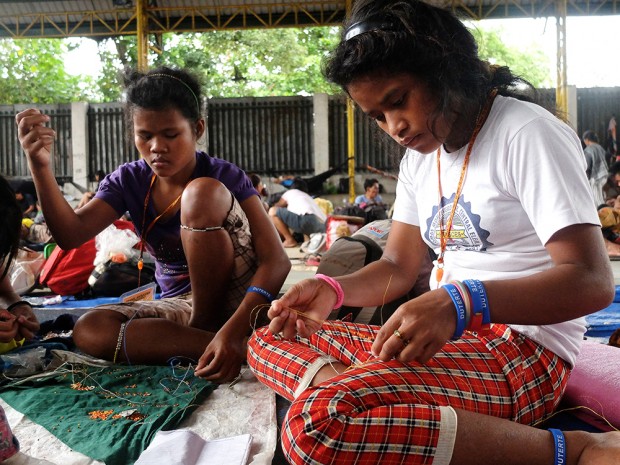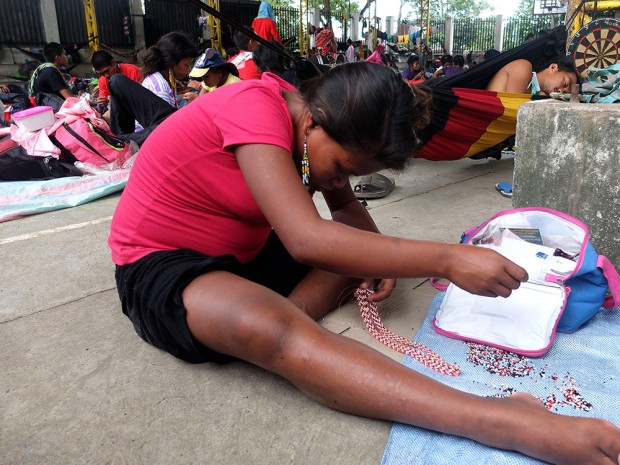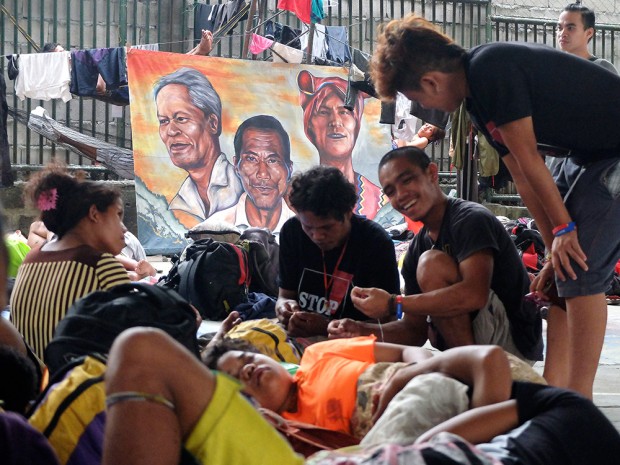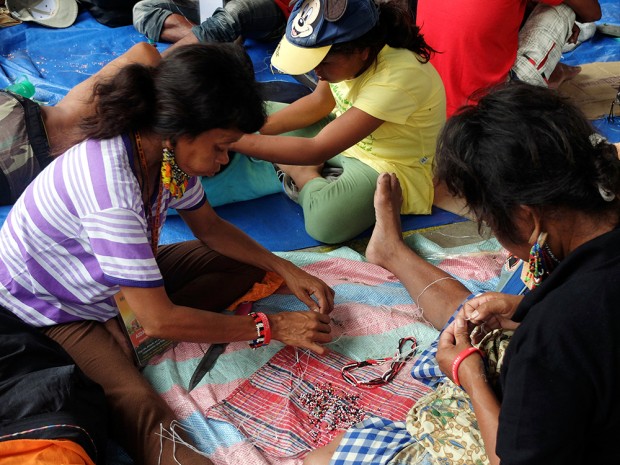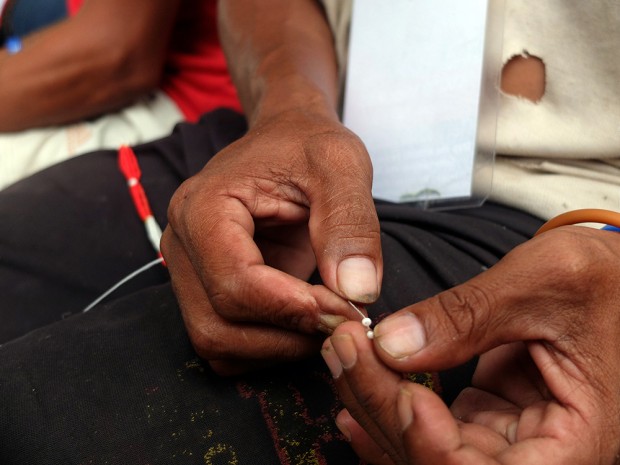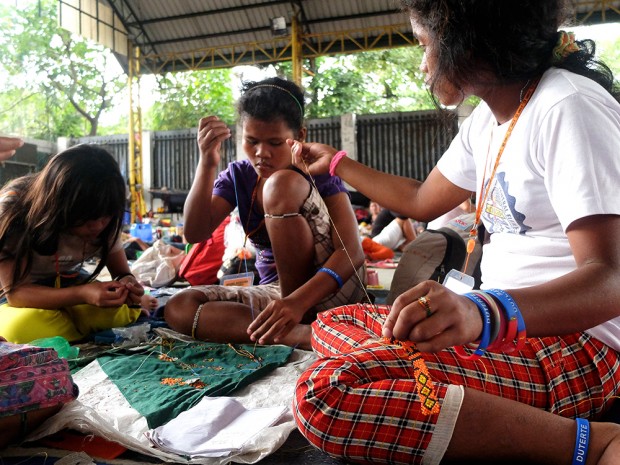Medical mission threatened by Alamara on their way back to Davao City
BELEAGUERED participants of the 31-member National Medical and Solidarity Mission to Talaingod, Davao del Norte province are currently on their way back to Davao City after being stranded due to threats by the notorious paramilitary group Alamara yesterday.
Save Our Schools Network spokesperson and mission participant Rius Valle said on his Facebook page that the remaining members of their mission stranded in Sitio Nasilaban in Barangay Palma Gil have been fetched by Talaingod Councilor Alfredo Dao-an who escorted them to the town center.
The mission was forced to spend Sunday night at Nasilaban after the Alamara led by Joven Salangani threatened hired motorcycle drivers and ordered them not to fetch mission members.
“Do not fetch them or you will be hurt,” Salangani told the drivers, the mission’s alert said yesterday.
Valle said Salangani is a dangerous fugitive, accused of killing 15-year old Salugpongan School student Alibando Tingkas last January 2016.
“I wonder why he is still at large,” Valle said.
The Alamara was reported to have been created and trained by the 60th Infantry Battalion of the Philippine Army.
Mission participants and members of the rescue team from UP Mindanao filed a blotter report with the Municipal Police Station upon reaching Talaingod town proper, Valle reported.
Cholera epidemic
Volunteer medical professionals, social workers, teachers and students from the University of the Philippines-Mindanao as well as representatives of people’s organizations and government agencies conducted the medical and solidarity mission to investigate a cholera epidemic that victimized the Lumad community in the area since November.
Twenty-seven were reported to have died from the epidemic.
The mission delivered medical services to around 2,000 families in the area, participated by personnel from the Fr. Fausto Tentorio Foundation, Council for Health and Development, Redemptorist Church-Baclaran, Mindanao Foundation for Medical Disaster Prepared and Response, Davao Medical School Foundation students, Family Planning Organization of the Philippines-Kidapawan and the Association of Pre-Medical Students of UP-Mindanao.
The mission also conducted a relief operation with the support of the Kilusang Magbubukid ng Pilipinas, Salugpongan Learning Center, PASAKA Confederation of Lumad Organization, Department of Social Work and Development, the Makabayan bloc at the House of Representatives, Holy Cross of Davao College students and Kilusang Mayo Uno (KMU).
The mission a held a children’s activity as well, facilitated by the Children’s Rehabilitation Center, SOS, UP Mindanao Anthropology students, and the National Youth Commission.
Valle thanked Sitio Nasilaban leaders and residents, KMU members and Salugpongan students who provided security overnight as well as government officials and concerned groups who facilitated their extraction from the area.
The mission is expected to hold a press conference upon reaching Davao City later today. (Raymund B. Villanueva/Featured photo by Rius Valle-Save Our Schools Network)

